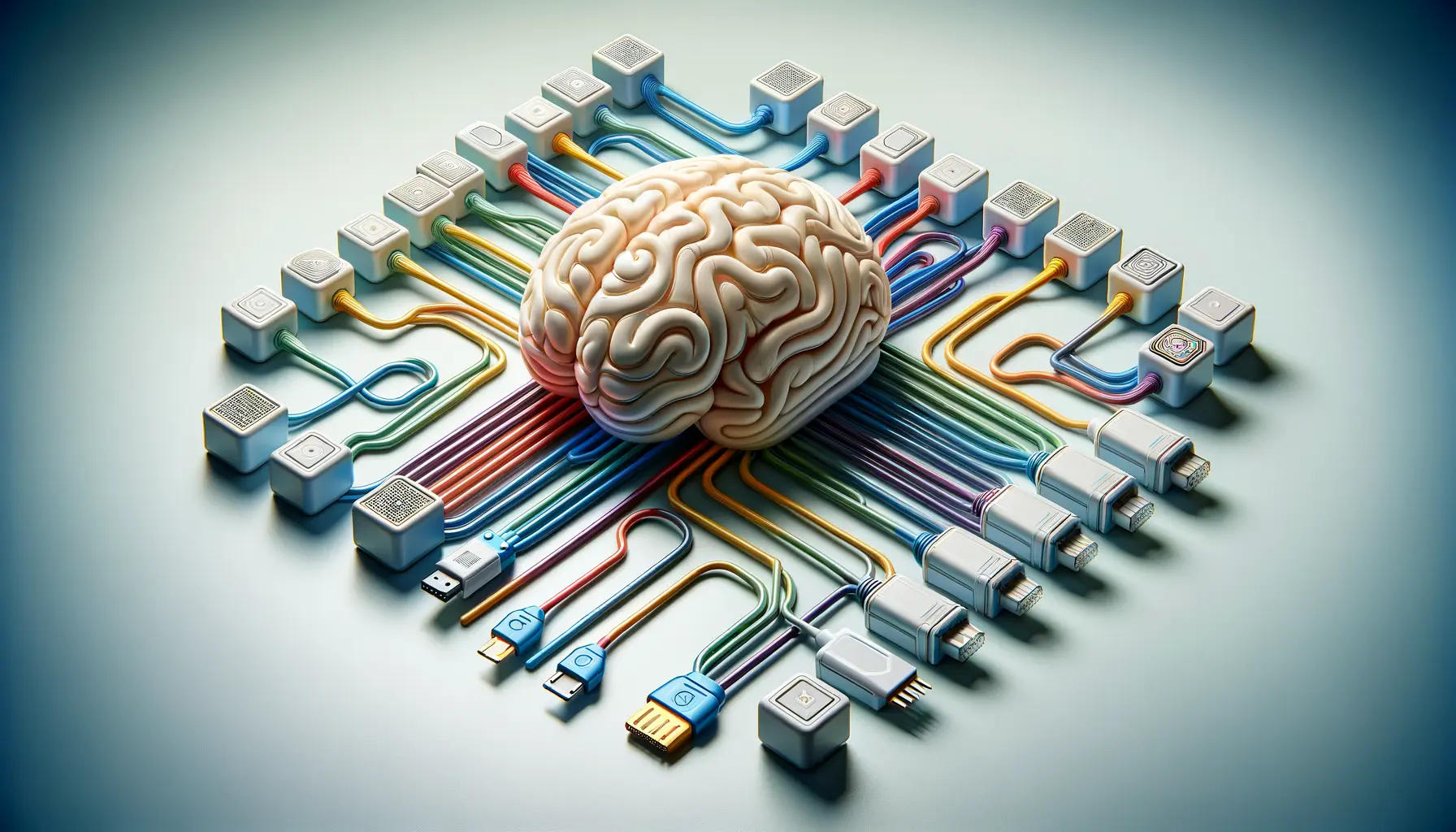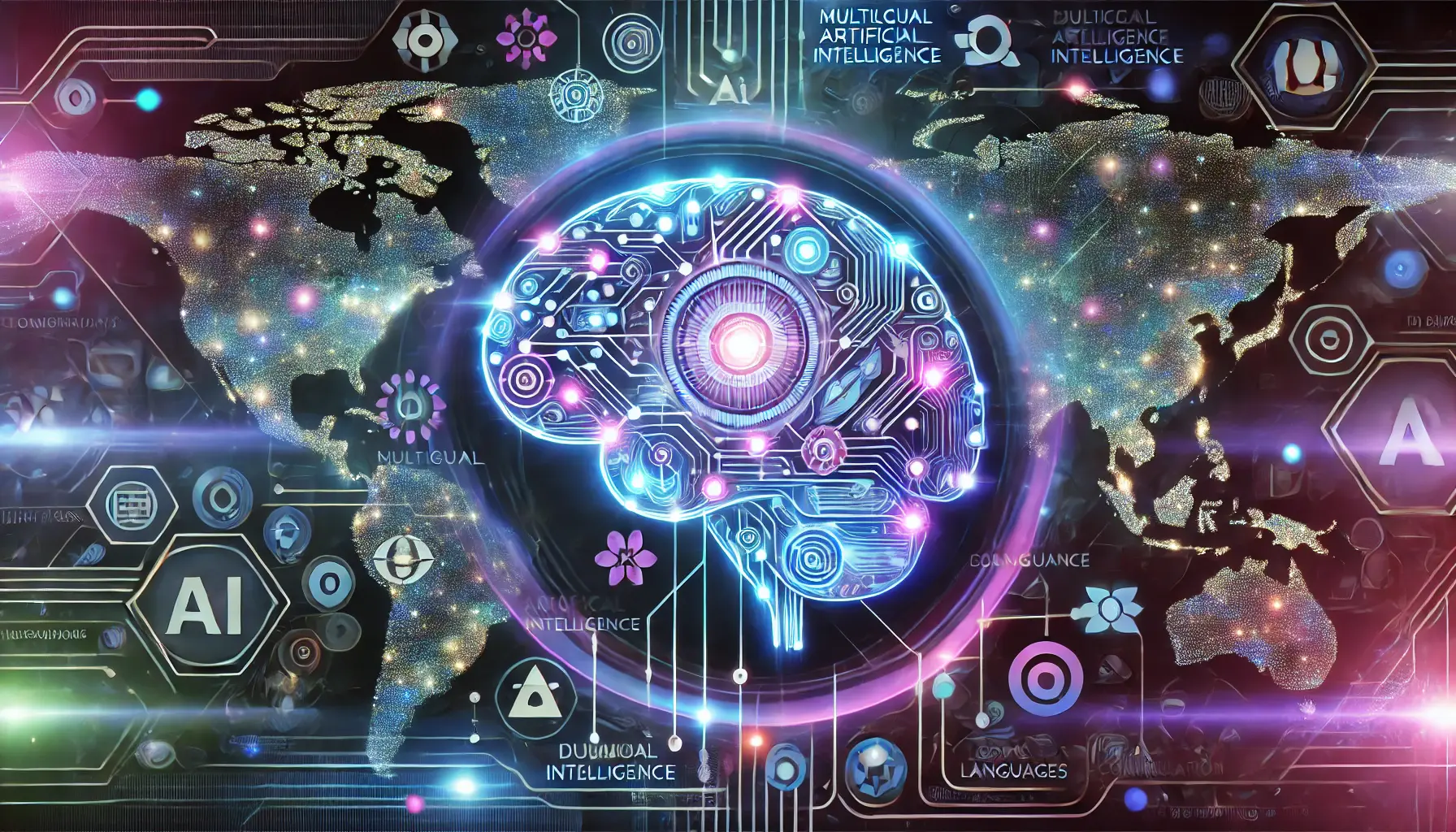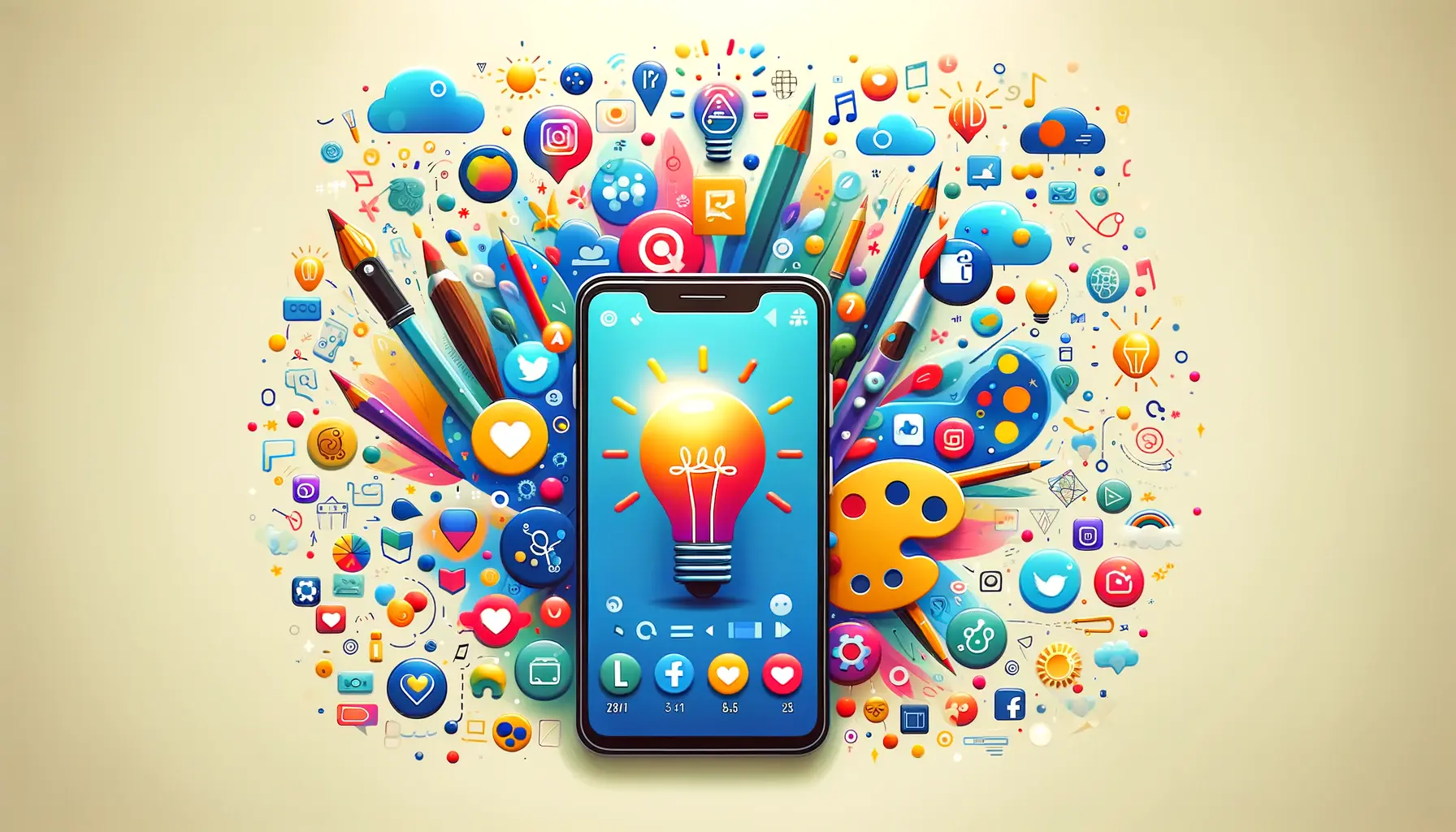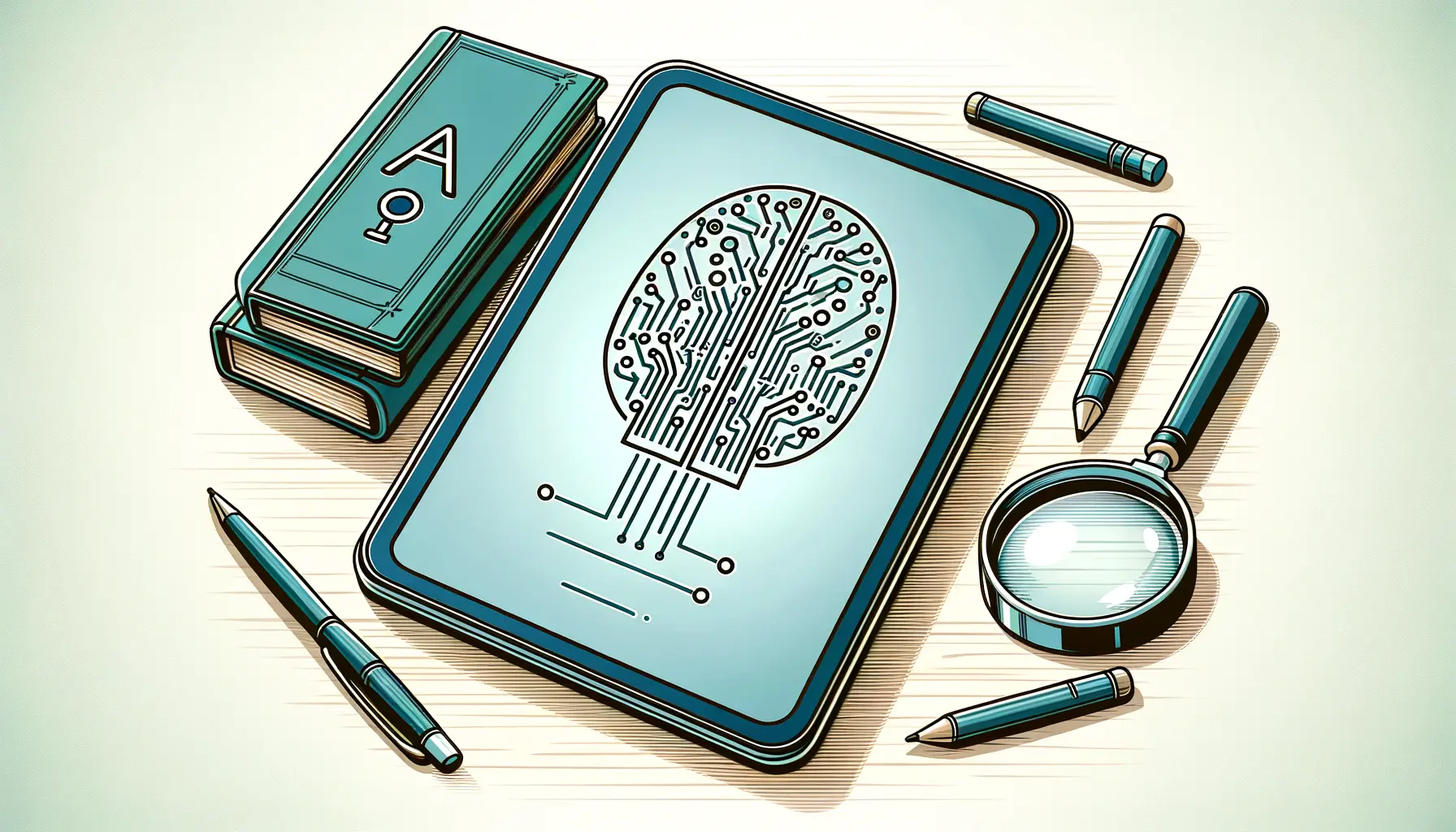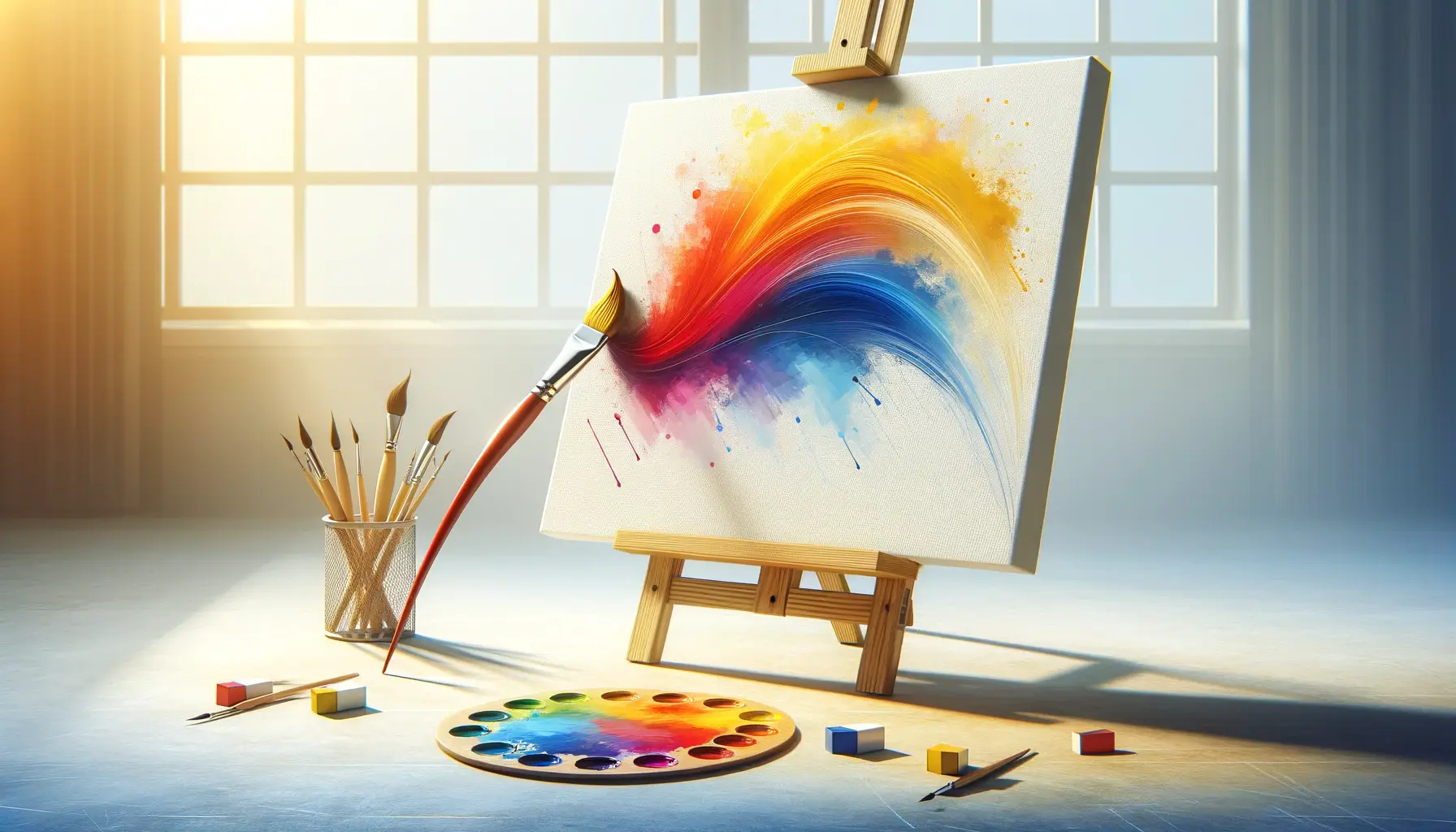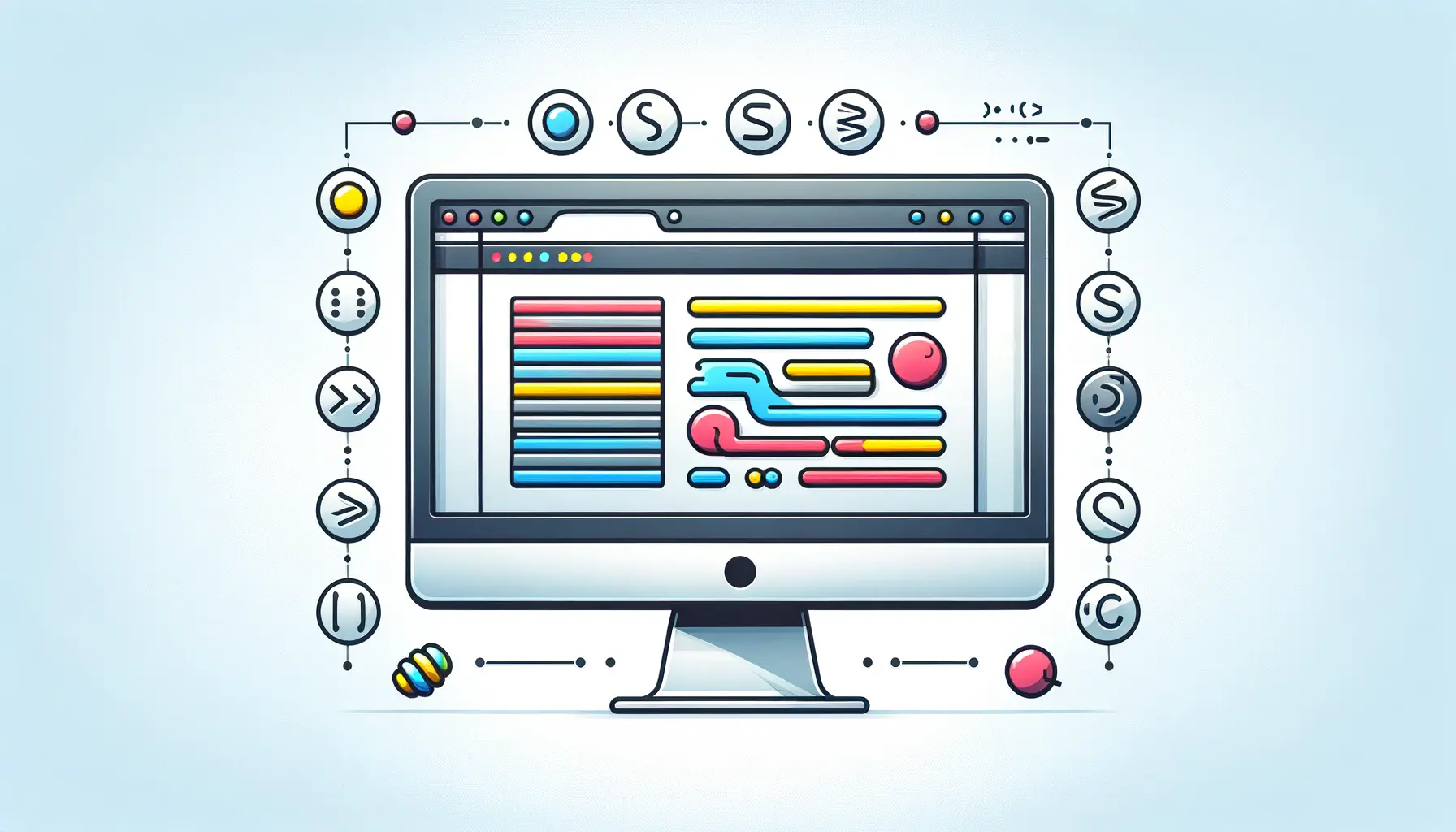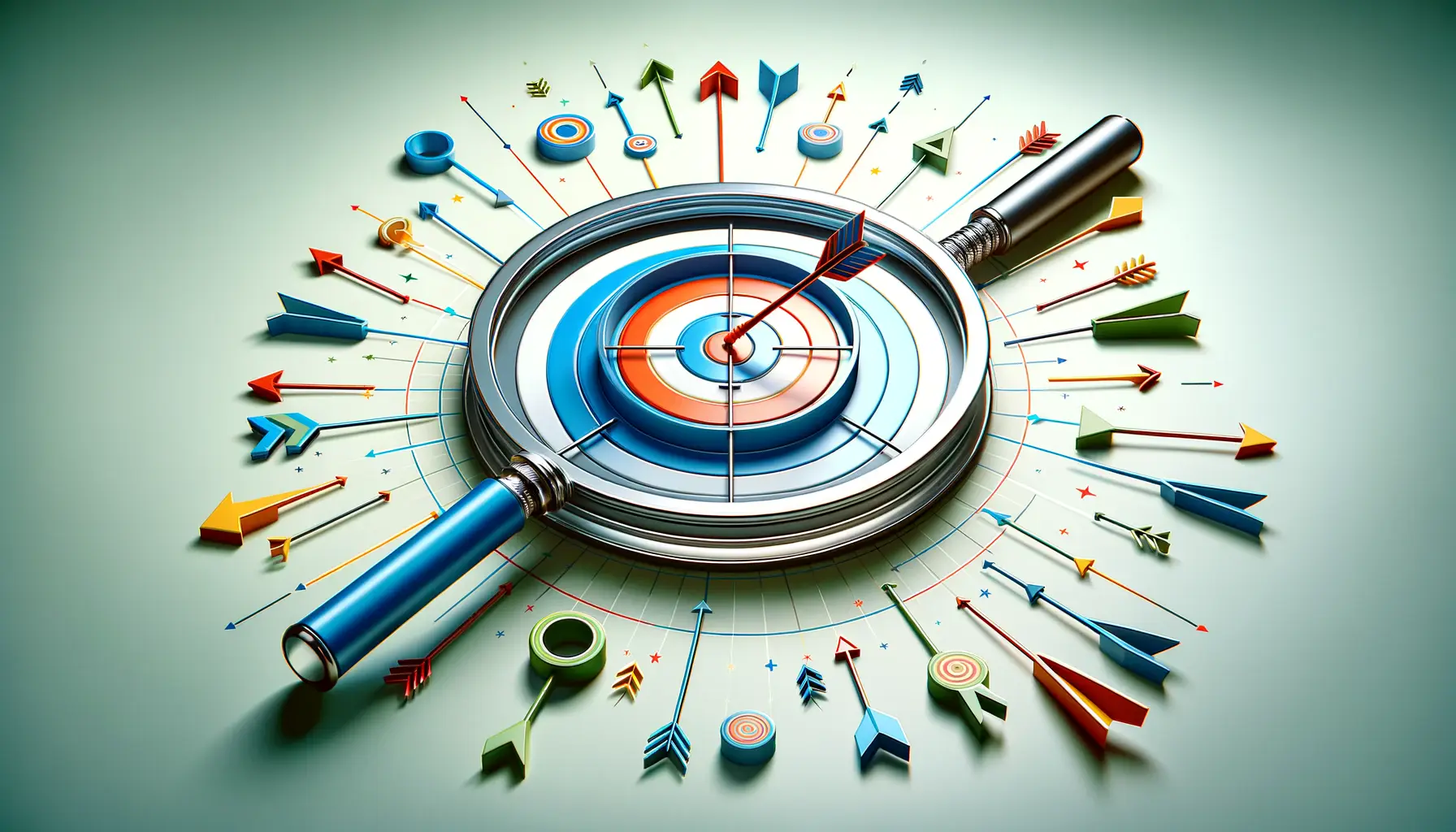Embarking on the journey to master DALL-E, OpenAI’s groundbreaking AI model capable of generating stunning images from textual descriptions, opens up a world of creativity and innovation.
This transformative technology has not only captivated the imagination of artists and designers but has also become a pivotal tool in various industries, from marketing to education.
The essence of mastering DALL-E lies in understanding its capabilities, limitations, and the vast potential it holds for creative expression.
As we delve into the educational resources available, our goal is to equip you with the knowledge and skills to harness the full power of DALL-E, transforming your creative visions into reality.
The exploration of DALL-E requires a multifaceted approach, combining theoretical knowledge with practical application.
This journey is not just about learning to generate images; it’s about understanding the intricacies of prompt engineering, the ethical considerations of AI-generated content, and the innovative ways DALL-E can be applied across different fields.
With the right resources, mastering DALL-E becomes an achievable goal, opening up new horizons for creativity and innovation.
- Understanding DALL-E and Its Foundations
- Practical Applications of DALL-E in Various Fields
- Mastering the Art of Prompt Engineering
- Ethical Considerations in AI-Generated Art
- Integrating DALL-E into Educational Curriculums
- Future Prospects of AI in Creative Industries
- Challenges and Solutions in Adopting DALL-E
- Embracing the Future with DALL-E: A Conclusive Overview
- Educational Resources for Mastering DALL-E FAQs
Understanding DALL-E and Its Foundations
Introduction to DALL-E
The inception of DALL-E by OpenAI marked a significant milestone in the field of artificial intelligence.
This AI model’s ability to interpret textual prompts and generate detailed, coherent images has revolutionized the way we think about machine learning and creativity.
The foundation of DALL-E’s success lies in its sophisticated training on a diverse dataset, enabling it to understand and visualize concepts in ways that were previously unimaginable.
For those new to DALL-E, starting with the basics is crucial.
Understanding its operational framework, from prompt engineering to the nuances of its output, is the first step in leveraging its capabilities.
Educational resources, including OpenAI’s own documentation and tutorials, provide a solid foundation for beginners.
These resources explain the model’s architecture, its evolution from DALL-E to DALL-E 2, and the principles behind generating high-quality images from textual descriptions.
Exploring Prompt Engineering
Prompt engineering stands at the core of effectively utilizing DALL-E.
This process involves crafting textual prompts that guide the AI to produce the desired images.
The art of prompt engineering is not just about the words used; it’s about understanding the relationship between language and visual representation.
By experimenting with different prompts, users can discover how subtle changes in wording can significantly alter the generated images.
Educational materials on prompt engineering offer insights into strategies for creating effective prompts.
These include the use of descriptive language, the importance of specificity, and techniques for eliciting certain styles or themes from DALL-E.
Through online courses and community forums, learners can share prompt ideas, receive feedback, and continuously refine their skills.
This collaborative learning environment fosters creativity and innovation, pushing the boundaries of what can be achieved with DALL-E.
Mastering DALL-E is not just about learning to use the tool; it’s about understanding the intersection of language, creativity, and technology.
Practical Applications of DALL-E in Various Fields
The practical applications of DALL-E extend far beyond the realms of digital art and design, permeating various sectors with its innovative capabilities.
By understanding how DALL-E can be applied in different contexts, individuals can unlock new opportunities for creativity, problem-solving, and communication.
This section explores the diverse uses of DALL-E across different fields, highlighting its versatility and impact.
Enhancing Creative Industries
The most immediate application of DALL-E is found within the creative industries.
Artists, graphic designers, and content creators utilize DALL-E to generate unique visuals, concept art, and illustrations.
This AI tool not only accelerates the creative process but also inspires new forms of artistic expression.
By inputting imaginative prompts, creators can explore visual concepts that would be challenging or time-consuming to produce manually.
- Graphic design projects benefit from rapid prototyping and the exploration of multiple design concepts.
- Illustrators use DALL-E to generate background scenes or elements that complement their hand-drawn characters.
- Content creators leverage DALL-E for eye-catching visuals that enhance their digital content and engage their audience.
Revolutionizing Marketing and Advertising
In the marketing and advertising sector, DALL-E’s ability to produce tailored images on demand is a game-changer.
Companies can create customized marketing materials that resonate with their target audience, from social media posts to advertising banners.
DALL-E enables marketers to experiment with different aesthetics and themes, ensuring their campaigns stand out in a crowded digital landscape.
- Development of unique brand visuals that align with specific marketing campaigns.
- Generation of diverse advertising content to test different visual strategies.
- Creation of personalized images for email marketing campaigns to increase engagement.
Transforming Educational Content
Educators and instructional designers are finding DALL-E to be a valuable tool in creating educational materials.
By generating images that depict complex concepts or historical events, DALL-E helps make learning more engaging and accessible.
Custom illustrations can be created to complement lesson plans, textbooks, and online courses, catering to various learning styles and enhancing the educational experience.
- Visual aids for science education, illustrating complex biological processes or chemical reactions.
- Historical reconstructions that bring past events to life for students.
- Custom illustrations for children’s educational materials that stimulate imagination and learning.
The versatility of DALL-E opens up endless possibilities for innovation across industries, proving that AI can be a powerful ally in creative and professional endeavors.
Mastering the Art of Prompt Engineering
The key to unlocking DALL-E’s full potential lies in the art of prompt engineering.
This skill involves crafting textual descriptions that guide the AI to generate images that closely match the user’s intent.
Mastering prompt engineering is not just about using the right keywords; it’s about understanding how DALL-E interprets language and translates it into visual content.
This section delves into strategies and tips for effective prompt engineering, empowering users to create more precise and imaginative visuals.
At the heart of prompt engineering is the balance between specificity and creativity.
Users must learn to navigate the fine line between providing enough detail to guide the AI and leaving room for creative interpretation.
This balance is crucial for generating images that are both accurate to the prompt and rich in creativity.
Strategies for Effective Prompt Crafting
- Be Specific: Include detailed descriptions of what you want to see in the image, such as objects, setting, and mood. Specificity helps DALL-E understand your vision more clearly.
- Use Vivid Language: Employ descriptive and vivid language to evoke a stronger image. Words that describe textures, colors, and emotions add depth to your prompts.
- Incorporate Artistic Styles: Mentioning specific artistic styles or movements can guide DALL-E towards generating images in the desired aesthetic.
Advanced Prompt Engineering Techniques
- Negative Prompting: Specify what you do not want in the image by using phrases like “without” or “excluding”. This technique helps in refining the output.
- Iterative Refinement: Start with a broad prompt and refine the output by adding more details or corrections in subsequent prompts. This iterative process allows for fine-tuning the final image.
- Combining Concepts: Experiment with combining unrelated concepts or ideas in a single prompt to generate unique and imaginative visuals.
Effective prompt engineering is a skill that improves with practice. Engaging with the DALL-E community and sharing prompts can provide new insights and inspiration.
Ethical Considerations in AI-Generated Art
The advent of AI-generated art, epitomized by DALL-E, has sparked a significant discussion around the ethical implications of using artificial intelligence in creative processes.
As we embrace the capabilities of DALL-E to produce stunning visuals from textual prompts, it’s crucial to navigate the ethical landscape that accompanies this technology.
This involves considering copyright issues, the originality of AI-generated content, and the potential impact on traditional art forms and artists.
Understanding and addressing these ethical considerations is essential for responsibly using DALL-E.
It ensures that while we push the boundaries of creativity, we also respect the rights of creators and maintain the integrity of artistic expression.
This section explores the key ethical considerations and offers guidance on navigating these complexities.
Copyright and Intellectual Property Rights
- Respecting Copyright: It’s vital to ensure that prompts and generated images do not infringe on existing copyrights. Users should create original prompts and be mindful of using copyrighted material as inspiration.
- Ownership of AI-Generated Art: The question of who owns the copyright to images generated by DALL-E—whether it’s the user who provided the prompt, OpenAI as the creator of DALL-E, or no one at all—is still a topic of legal debate. Understanding the current legal stance in your jurisdiction is important.
Impact on Traditional Artists and Art Forms
- Complementing Human Creativity: DALL-E should be viewed as a tool that complements human creativity rather than replacing traditional artists. It can serve as a source of inspiration and a means to explore new artistic horizons.
- Supporting Artistic Collaboration: Encouraging collaborations between AI and artists can lead to innovative art forms and help integrate AI into the creative industry ethically and sustainably.
While AI-generated art challenges traditional notions of creativity, it also offers an opportunity to redefine artistic expression in the digital age. Navigating these ethical considerations thoughtfully ensures that DALL-E enhances rather than diminishes the art world.
Integrating DALL-E into Educational Curriculums
The integration of DALL-E into educational curriculums represents a forward-thinking approach to learning, offering students and educators alike the opportunity to engage with cutting-edge technology.
By incorporating DALL-E into various subjects, educators can enhance the learning experience, making complex concepts more accessible and engaging through visual representation.
This section explores the potential of DALL-E in education, providing insights into how it can transform traditional teaching methods.
Utilizing DALL-E within educational settings encourages creativity, critical thinking, and digital literacy among students.
It allows for a more interactive and participatory learning environment, where students can visualize historical events, scientific phenomena, and abstract concepts.
This hands-on approach to learning with DALL-E not only enriches the educational experience but also prepares students for a future where technology and AI play a central role.
Visualizing Complex Concepts
- Science and Mathematics: DALL-E can generate images that illustrate scientific processes, mathematical concepts, and data visualizations, making abstract ideas more tangible and understandable.
- History and Social Studies: By creating visuals of historical events, figures, and cultures, DALL-E helps students visualize and better understand the past.
Enhancing Creative Writing and Art
- Storytelling: DALL-E can bring students’ stories to life by generating images based on their narratives, enhancing their storytelling skills and creativity.
- Art Education: Students can explore different art styles, techniques, and visual storytelling through DALL-E, fostering an appreciation for art and encouraging artistic expression.
Facilitating Project-Based Learning
- Interdisciplinary Projects: DALL-E enables the creation of interdisciplinary projects that combine art, technology, and various academic subjects, promoting collaboration and problem-solving skills.
- Global Awareness: Projects utilizing DALL-E can focus on global issues, cultural diversity, and social justice, encouraging students to think critically about the world around them.
The integration of DALL-E into educational curriculums not only enhances the learning experience but also equips students with the skills to navigate a future dominated by AI and technology.
Future Prospects of AI in Creative Industries
The integration of artificial intelligence, particularly through tools like DALL-E, into the creative industries heralds a new era of innovation and collaboration.
As we stand on the brink of this technological revolution, the future prospects of AI in creative fields are both exhilarating and unprecedented.
This evolution promises to redefine the boundaries of creativity, offering new tools and methodologies for artistic expression and design.
The potential for AI to augment human creativity, streamline design processes, and open up new avenues for artistic exploration is immense.
As AI continues to evolve, its role in the creative industries is set to expand, offering more sophisticated tools and capabilities.
The collaboration between AI and human creativity will likely produce new art forms and design methodologies, pushing the limits of what is possible.
This section explores the future prospects of AI in creative industries, highlighting the transformative impact of tools like DALL-E.
Augmenting Human Creativity
- New Forms of Art: AI opens up possibilities for creating art that blends traditional techniques with digital innovation, leading to new genres and styles.
- Collaborative Art Projects: Projects that combine the efforts of AI and human artists can lead to unique collaborations, where technology and human insight create complex, captivating works.
Streamlining Design Processes
- Efficiency in Design: AI can significantly reduce the time and effort required for conceptualization and prototyping, allowing designers to focus on refining their ideas.
- Personalized Design Solutions: AI’s ability to analyze data and understand user preferences can lead to more personalized and effective design solutions.
Expanding the Scope of Creative Exploration
- Exploring Uncharted Territories: AI can help artists and designers explore ideas and concepts that were previously beyond reach, due to limitations in time, resources, or technology.
- Innovative Storytelling: In fields like film and gaming, AI can offer new ways to create immersive narratives and dynamic storytelling experiences.
The future of AI in creative industries is not just about the technology itself but how it can be harnessed to enhance and expand human creativity. As AI tools like DALL-E become more integrated into creative workflows, the potential for innovation is limitless.
Challenges and Solutions in Adopting DALL-E
While the adoption of DALL-E presents numerous opportunities for enhancing creativity and innovation, it also brings forth a set of challenges that need to be addressed.
These challenges range from technical limitations to ethical concerns, and their solutions are crucial for the effective and responsible use of this technology.
Understanding these challenges and exploring potential solutions is essential for individuals and organizations looking to leverage DALL-E in their creative endeavors.
As we navigate the complexities of integrating AI into creative processes, it becomes imperative to identify these challenges and work towards practical solutions.
This proactive approach ensures that the benefits of DALL-E can be fully realized while minimizing potential drawbacks.
This section delves into the common challenges associated with adopting DALL-E and offers insights into possible solutions.
Technical Limitations and Accessibility
- Overcoming Technical Barriers: The technical complexity of DALL-E may pose a challenge for users without a background in AI or programming. Providing accessible tutorials and user-friendly interfaces can help bridge this gap.
- Improving Model Performance: Continuous research and development are essential for enhancing DALL-E’s capabilities, including image quality, prompt responsiveness, and creative flexibility.
Ethical and Legal Considerations
- Addressing Copyright Issues: Developing clear guidelines and tools for copyright compliance can help users navigate the legal landscape of AI-generated content.
- Promoting Ethical Use: Establishing ethical standards for the use of DALL-E, particularly in sensitive contexts, is crucial for maintaining the integrity of AI-generated art.
Enhancing Creativity without Diminishing Artistic Value
- Valuing Human Creativity: Emphasizing the role of DALL-E as a tool for augmenting human creativity, rather than replacing it, can help preserve the artistic value of human-made creations.
- Encouraging Collaboration: Fostering collaborations between AI and artists can lead to innovative projects that highlight the unique contributions of both.
Assuming that AI-generated art will diminish the value of traditional art is a misconception. Instead, the integration of tools like DALL-E into the creative process can enrich the art world by offering new perspectives and possibilities.
Embracing the Future with DALL-E: A Conclusive Overview
The journey through the realms of DALL-E unveils a landscape where creativity and artificial intelligence converge to redefine the boundaries of artistic and educational endeavors.
As we have explored, DALL-E is not merely a tool for generating images; it is a catalyst for innovation, a bridge between imagination and reality, and a testament to the potential of AI in enhancing human creativity.
The educational resources for mastering DALL-E, coupled with a deep understanding of its capabilities, ethical considerations, and practical applications, equip individuals and organizations to navigate the future of creative industries with confidence and vision.
Unlocking Creative Potentials
The exploration of DALL-E’s applications across various fields underscores the transformative impact of AI on creativity.
From augmenting the creative process in art and design to revolutionizing marketing strategies and enriching educational content, DALL-E has demonstrated its versatility and effectiveness.
The key to harnessing this potential lies in mastering the art of prompt engineering, which enables users to communicate their visions to the AI with precision and creativity.
Navigating Ethical Landscapes
However, the journey with DALL-E is not without its challenges.
Ethical considerations, particularly regarding copyright and the originality of AI-generated content, necessitate a thoughtful approach to using DALL-E.
By fostering a culture of ethical use and respecting the intellectual property rights of creators, we can ensure that DALL-E serves as a force for good, enhancing human creativity rather than diminishing it.
Looking Ahead: The Future of AI in Creativity
- The continuous evolution of DALL-E promises even more sophisticated tools for creative expression, opening up new possibilities for artists, designers, and educators.
- Collaboration between AI and humans will likely yield innovative art forms and methodologies, enriching the creative landscape.
- As technical barriers are overcome and ethical frameworks are established, DALL-E will become increasingly accessible, empowering a broader spectrum of users to explore their creative potentials.
In conclusion, the educational resources for mastering DALL-E provide a foundation for individuals and organizations to embark on this transformative journey.
By embracing the possibilities that DALL-E offers, we can look forward to a future where AI and human creativity collaborate to create a world that is more vibrant, imaginative, and inclusive.
The journey with DALL-E is just beginning, and the potential for what can be achieved is as limitless as our collective imagination.
Educational Resources for Mastering DALL-E FAQs
Discover answers to frequently asked questions about utilizing educational resources to master DALL-E, OpenAI’s revolutionary AI model for generating images from textual descriptions.
DALL-E is an AI model developed by OpenAI capable of generating complex images from textual descriptions, blending creativity with technology.
Prompt engineering involves crafting detailed textual descriptions that guide DALL-E to generate images that match the user’s intent.
While DALL-E excels in image generation, incorporating specific text into images can be challenging, sometimes resulting in gibberish.
Yes, numerous beginner guides and courses are available online, offering step-by-step instructions on leveraging DALL-E for image generation.
Educators can access a variety of resources, including webinars, live streams, and online courses, to integrate AI tools like DALL-E into their curriculums.
DALL-E offers innovative solutions for art, design, and marketing, enabling the creation of unique visuals and aiding in the conceptualization process.
Users must consider copyright issues, the originality of AI-generated content, and the impact on traditional art forms when using DALL-E.
Beginners should explore online tutorials, participate in community forums, and practice prompt engineering to start experimenting with DALL-E.

